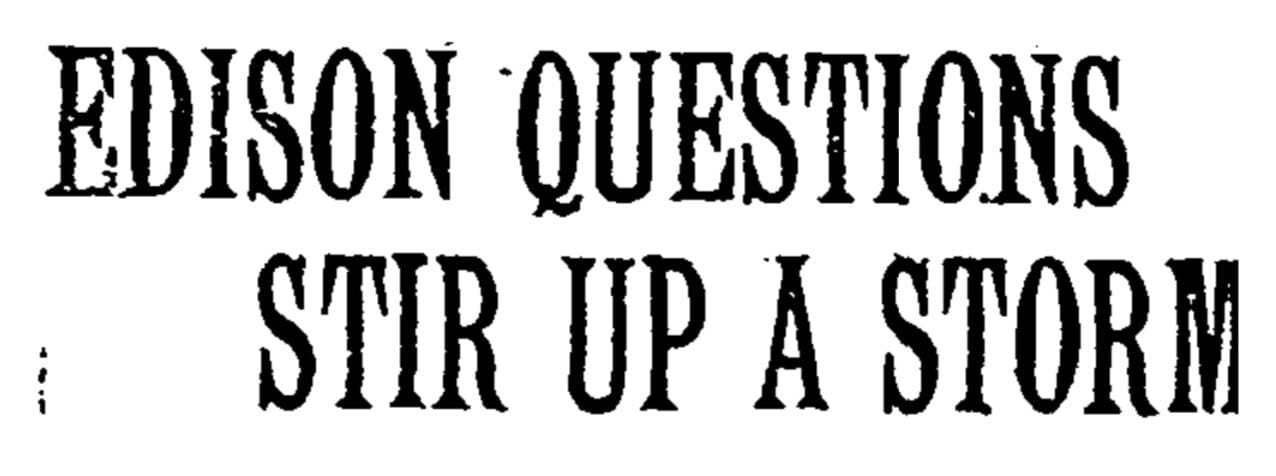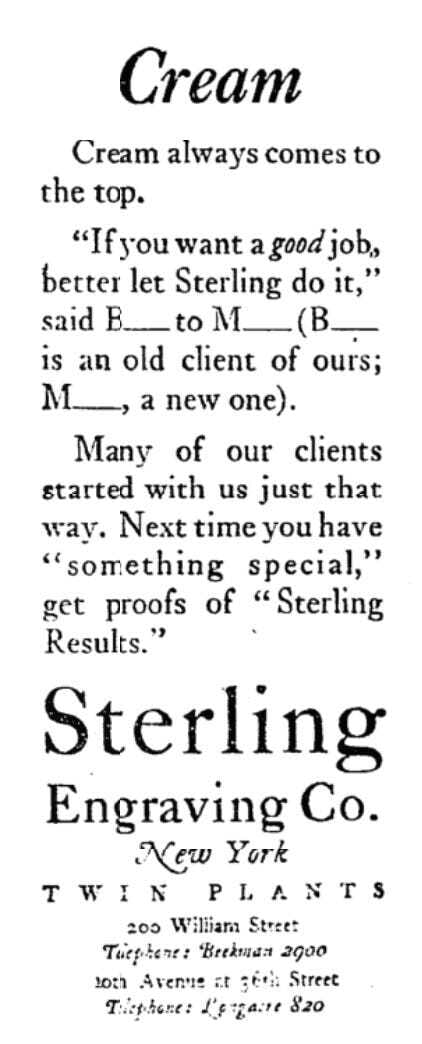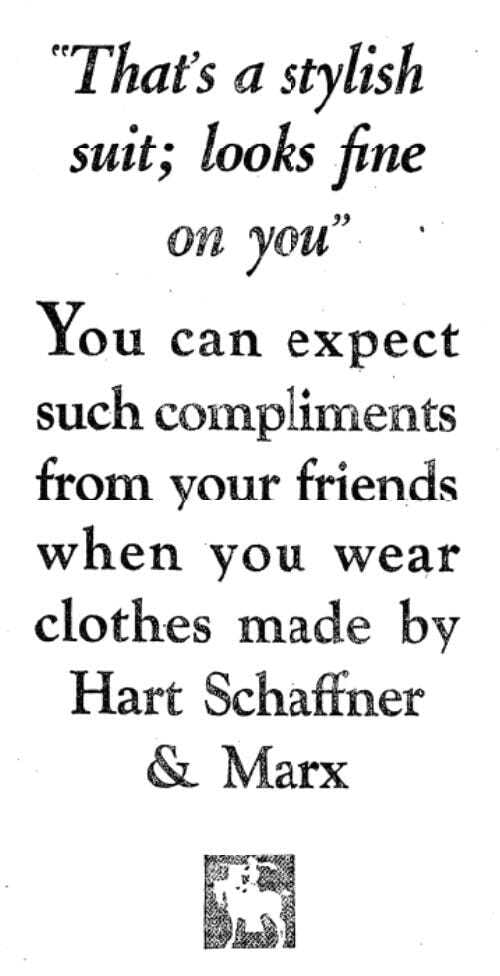- Strange Times
- Posts
- Strange Times 131: Battle of Billiard Balls
Strange Times 131: Battle of Billiard Balls
Before we dig into today’s madness, I will remind you again that if you like reading words with your eyeballs, Critical Hit has 93,000 of them that you can read. Get it now, folks! Now!
And if you’re the type who likes to try before you buy, last week’s issue carried a most exclusive excerpt.
That done, we can move on to our regularly scheduled programming, which includes a battle at a billiard parlor, a heroic mother cat, and the lunacy of Thomas Edison. Answer 163 meaningless trivia questions on…
May 11, 1921
Nine of the ten women who escaped from the State Reformatory at Bedford have been recaptured, some “water soaked and penitent,” others “exhausted but boisterous.”
The Weather: Fair today; Thursday unsettled, showers; no change in temperature; fresh easterly winds.

World’s greatest heist.
Billiard balls and cues were used as weapons by Hugh Smollen, day manager of the Chres Billiard Parlor, on the second floor of 1849 Broadway, to repel a bandit, who held him up, took $27 from the cash register, and fled to the street. Policeman Henry Singer later arrested Cornelius Brady, 19 years old, of 813 Fifty-ninth Street, Brooklyn, after a chase, and locked him up on charges of robbery.
According to Smollen, Brady entered the billiard rooms while two other men were playing. He waited until they had left and ordered Smollen into the lavatory. As he opened the cash register, Smollen emerged fro mthe lavatory and aimed a billiard ball at his head. Brady ducked, and Smollen followed up with a cue. After several volleys of billiard balls were exchanged, the advantage lay with Smollen, and Brady retreated in disorder to the street.
Smollen gave the alarm from a window and Policeman Singer caught up with Brady and captured him in West Sixtieth Street.

This is even better than a story about a heroic cat saving its owner. This cat is thinking, “Those humans can deal with their own nonsense. I’ve got kittens to save.” Also, one-sentence news articles are the best news articles.
MIDDLETOWN, N.Y., May 10.—When fire threatened destruction of a large barn here today, four kittens, unable to care for themselves, were carried to safety, one at a time, by the mother cat while firemen were fighting the flames.

This is an unusual story, and I will summarize most of it rather than type it up in its entirety. For the last few days, Thomas Edison—yes, that one—has been grousing that the nation’s colleges are not producing graduates fit to work at his factory. As evidence, he’s stated that only one in twenty-three applicants to work at his plant have taken full marks on his 163 question aptitude test. Although the test’s questions are kept secret, one failed applicant has provided the Times with a sample of them, produced from memory.
They are batty. One failed applicant, Charles Hansen, describes the exam as “not a Tom Edison but a Tom Foolery test,” and he’s not wrong, but Edison and his aids stand by the test as a good gauge of general intelligence. Take the test yourself and see. If you get 100%, you are hereby allowed to go back in time and work for Thomas Edison.
Where is the River Volga?
What country and city produce the finest china?
Where does the finest cotton grow?
What country consumed the most tea before the war?
What city in the United States is noted for its laundry machine making?
What city is the fur centre in the United States?
Can you play any musical instrument?
What country is the greatest textile producer?
Is Australia larger than Greenland in area?
Where is Copenhagen?
Where is Spitzbergen?
In what country other than Australia are kangaroos found?
What telescope is the largest in the world?
Who was Bessemer and what did he do?
Where do we get prunes from?
How many States in the Union?
Who was Paul Revere?
Who was Hancock?
Who was Plutarch?
Who was Hannibal?
Who was Danton?
Who was Solon?
Who was Frances Marion?
Who was Leonidas?
Where did we get Louisiana from?
Who was Pizarro?
Who was Bolivar?
What war material did Chile export to the allies during the war?
Where does the most coffee come from?
Who invented logarithms?
In what city are hats and shoes made?
How far is it from New York to Buffalo by way of the New York Central railroad?
How far is it from New York to San Francisco?
What State has the largest amethyst mines?
What is the name of a famous violin maker?
Who invented the modern paper-making machine?
On what principle is the telephone based?
Where do we get tin from?
What ingredients are in the best white paint?
How is artificial silk made?
What is a caisson?
What causes the tides?
To what is the change of seasons due?
What is the population of the following countries: Germany, Japan, England, Australia, Russia?
From what part of the North Atlantic do we get codfish?
What is a monsoon?
What planet is it that has been recently measured and found to be of enormous size?
In what country are earthquakes frequent?
Name six big business men in the United States.
Who is called the father of railways?
What business do you like best?
Are you experienced in any of the following: Salesmanship, clerk, stenography, bookkeeping?
Name a few kinds of wood used in making furniture, and the highest priced?
Of what kind of wood are axe handles made?
What part of Germany do we get toys from?
Who was Cleopatra?
Where are condors to be found?
What voltage is used on street cars?
What cereal is used all over the world?
What country produces the most nickel?
What is the distance between the earth and the sun?
Who invented photography?
What is felt?
What is the weight of air in a room 20x30x10?
What is the price of 12 grs. of gold?
What country makes the best optical lenses and what city?
Where do we get borax from?
What is a foot pound?
Calls Examination Silly
Mr. Hansen calls attention to the fact that he was able to remember so nearly all the questions, remarks that that is “not so bad for an ignorant college graduate,” expresses the opinion that the examination is more appropriate for a high school boy than a college man, and says:
“I want you and the public to judge whether a full blooded man who has been out of college and out in the business world for the past ten years could average 50 per cent. on this silly examinator.”
Another letter received yesterday described the experience of a man who answered Mr. Edison’s advertisement for a production engineer, was told that his qualifications were satisfactory and then was required to answer a questionnaire, after which he was to have had a personal interview with the inventor.
“I finally completed my answers to the sixty or more questions,” he writes. “During this time Mr. Edison paced back and forth, irritably demanding why certain results were not being obtained in his factory and denouncing what he termed bone-headed moves on the part of his executives, while the latter shouted their excuses into his deaf ears. My written answers were given to him, and after a few moments of waiting I was told I had failed and was ‘given the air’ with the other fellows who had also failed.
“Aside from several silly catch questions, the majority were ones embracing formulas that are always safest when left in standardized textbooks. Any attempt to memorize formulas and little used specifications is, without a doubt, disastrous and may be compared to a man operating a large business by his memory rather than by bookkeeping.
“Some of the questions were:
“What is a Chinese windlass? If six brick were placed on a glass plate, would it require more effort to move them if placed side by side or on top of one another? If a ball weighing one pound is dropped from a height of one foot on an anvil what force in pounds would it create when striking the anvil? What pinch pressure at the driving wheels does a 25-ton locomotive require when drawing a load of 100 tons on level track?”


